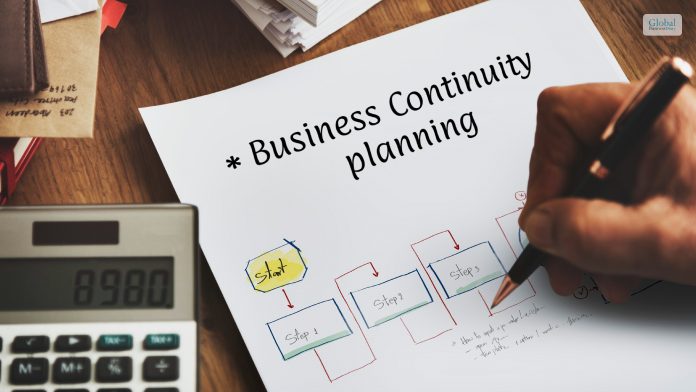Why Business Continuity Planning Is Essential For Your Company?

When crises happen in business, it is quite common to panic and make wrong decisions by remaining unprepared. Crises can happen anytime, and you must not start every day with the worst that can happen. However, you must stay prepared for anything to happen. You can do this with the help of a useful business continuity planning structure in place. This is because, if you do not stay prepared for the crises, it can cost your company a lot.
In this article, you will learn some general details about business continuity planning. Apart from that, you will learn the importance of having such a planning structure in place. Furthermore, we will also discuss some of the major benefits of business continuity planning, which you must be aware of. Finally, we will share with you the steps you can follow to implement business continuity planning.
What Is Business Continuity Planning?
Business continuity planning is essential for a company as it helps in creating a prevention and recovery from the various risks and threats that can potentially affect the company. Having the plan will ensure that the personnel and assets of the company are protected.
Protecting them will enable the company to start functioning by recovering quickly after a disaster situation. Business continuity planning is also essential to recover from situations like cyber-attacks where the company’s data gets compromised.
Read More: What Is Risk Management? – Find Out How To Manage Risks in Business
Why Is Business Continuity Planning Important?

According to TechTarget.com,
“The plan should enable the organization to keep running at least at a minimal level during a crisis. Business continuity helps the organization maintain resiliency in responding quickly to an interruption. Strong business continuity saves money, time and company reputation. An extended outage risks financial, personal and reputational loss.”
With the help of the business continuity plan, you are making the company look after itself. You are analyzing the potential areas for risks and gathering important information from those areas. You have to have full information about those areas which are helpful for disaster situations. Furthermore, having a business continuity plan is also important to comply with legal processes.
What Are The Benefits Of Business Continuity Planning?
According to Investopedia,
“Business continuity planning is typically meant to help a company continue operating in the event of major disasters such as fires. BCPs are different from a disaster recovery plan, which focuses on the recovery of a company’s IT system after a crisis.”
Basically, such a business continuity plan will help you to take stapes, including creating backups of projects, client information, and more. If something must happen to the company’s office, the satellite offices of the company will have access to all the essential information of the company.
However, a business continuity plan does not work if a large population in the company is affected. It can happen at times of an outbreak of a disease. Despite that, having a business continuity plan in place will help you to improve the risk management processes of the company.
Business Continuity Planning – Steps To Follow

To make a great business continuity plan, it is important to have a management that oversees the plan.
According to Hubspot.com,
“This type of management determines the potential threats to a company and how each of these threats might impact business functions. Based on these findings, business continuity management is able to tweak the company’s continuity plan to address any new potential hazards.”
There are some steps you must follow to develop useful business continuity planning for your organization. Here are they:
Step 1:
Select your Business Continuity Team. Here, you must assemble a management team. Make sure the team is well-organized and detail-oriented. Make sure there is at least an executive manager, a program coordinator, and an information officer.
Step 2:
Define the objectives of the business continuity plan. To do that, you will need to know about what your end goal is. Furthermore, you must also have good information on the resources and budget based on your current projects.
Step 3:
Find the key players of your department and interview them. Make sure to talk with the executives as they have a bird’s eye view of the organization. Furthermore, make sure to interview the key team members of each department. This will help you to get an analysis that is useful and comprehensive.
Step 4:
Identify the essential functions of the business and the types of threats. By doing so, you will be able to find the major areas of your business that require the highest level of business continuity.
Step 5:
Assess the Risks in Every Area. Here, all you need to do is quantify the information that you have gathered from the interviews.
Step 6:
Conduct an Impact Analysis. Here, you will need to summarize your findings based on the costs and benefits to find out further what your priorities are.
Step 7:
Draft the business continuity plan. You must have already got ideas regarding what to include in the plan. Include all the requirements of the plan, followed by the procedure and end goals.
Step 8:
Test gaps in the plan. Once you have created your plan, you must immediately test it for any gaps. You can do it by communicating with those who are implementing the plan.
Step 9:
Revise your plan on the basis of findings. This will be on the basis of your findings in Step 8. Here, you will need to correct the flaws that you have found throughout the process.
Read More: Business Risks – How To Identify, Manage, And Reduce Them?
Bottom Line
Business continuity planning is essential to hasten an organization’s recovery from a major risk leading to a threat or disaster. Basically, the company identifies all the risks that can affect the organization. The continuity plan puts in place various mechanisms and functions. With the help of these, the organization allows assets and personnel to minimize the company’s downtime.
In case of a disaster in the company, it is important to implement business continuity planning to provide cover for the disaster. Do you have any recommendations regarding how to implement business continuity planning? Share your views and ideas with us in the comments section below.
Read More:













